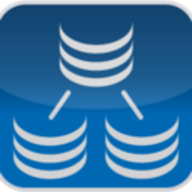

JumpMind SymmetricDS and Hitachi Thin Image Advanced compete in the data management and storage optimization category. SymmetricDS's competitive pricing and support give it an edge for cost-conscious buyers, while Hitachi Thin Image Advanced stands out due to its superior data storage features.
Features: SymmetricDS offers real-time data synchronization, flexible integration capabilities, and benefits from being open-source. Hitachi Thin Image Advanced provides advanced data replication, storage virtualization, and efficient use of storage resources. SymmetricDS is noted for adaptability, whereas Hitachi demonstrates robust performance for extensive storage environments.
Ease of Deployment and Customer Service: SymmetricDS is known for its straightforward deployment and flexible configuration options, backed by responsive customer service. Hitachi Thin Image Advanced involves a complex deployment due to its architecture but offers comprehensive technical support. SymmetricDS's ease of setup is contrasted with Hitachi’s resource-intensive implementation that requires expert assistance.
Pricing and ROI: SymmetricDS presents a lower setup cost appealing to buyers interested in flexible data solutions with a strong ROI from its open-source model. Hitachi Thin Image Advanced demands a higher initial investment but provides substantial returns via enhanced storage efficiencies and reduced long-term costs, offering a strategic investment for scalable storage management.
Nondisruptively copy data within any Hitachi storage system or virtualized storage pool. Hitachi Thin Image snapshot software quickly creates copies for immediate use in decision support, software development and modern data protection operations.
JumpMind SymmetricDS is a powerful data replication software that provides synchronization software solutions for both databases and filesystems. This software is platform-independent and web-enabled as well as database agnostic. JumpMind SymmetricDS creates prompt bi-directional data replication while scaling to a large amount of nodes and working in close to real time across both WAN and LAN networks. This allows companies to integrate data using the feature for continuous change data capture.
This data replication software allows companies with limited network bandwidth or bad connectivity to benefit from excellent cloud conditions. The greatest benefit of JumpMind SymmetricDS is its vast integration across databases, streaming platforms, and data warehouses. Some of the relational databases where this data replication software can be used include Oracle, PostgreSQL, MySQL, Sybase, Informix, Ingres, Tiber, and VoltDB. NoSQL databases like MongoDB, Apache Cassandra, and Azure Cosmos are also compatible with the JumpMind SymmetricDS data replication software. The data warehouses that are compatible with this software include Teradata, SAP HANA, Azure-SQL server by Microsoft, BigQuery, Amazon Redshift, Pivotal Greenplum, and Snowflake data warehouse. Providing coverage of so many databases and warehouses allows broad outreach of the JumpMind SymmetricDS across many different companies and users.
JumpMind SymmetricDS offers many valuable features, including:
Other features include tools for conflict detection and resolution, embedding and extending, filtering, subsetting, and transforming.
The benefits of using JumpMind SymmetricDS include:
According to the CEO at a non-profit, JumpMind SymmetricsDS is fully featured and is also very easy to use and install. He finds it to be self-explanatory to use and says that their support is very good.
We monitor all Data Replication reviews to prevent fraudulent reviews and keep review quality high. We do not post reviews by company employees or direct competitors. We validate each review for authenticity via cross-reference with LinkedIn, and personal follow-up with the reviewer when necessary.